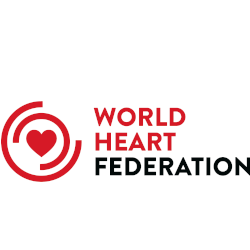Original Research
Secondary CV Prevention in South America in a Community Setting: The PURE Study
Abstract
Background: Despite the availability of evidence-based therapies, there is no information on the use of medications for the secondary prevention of cardiovascular disease in urban and rural community settings in South America.
Objectives: This study sought to assess the use, and its predictors, of effective secondary prevention therapies in individuals with a history of coronary heart disease (CHD) or stroke.
Methods: In the PURE (Prospective Urban Rural Epidemiological) study, we enrolled 24,713 individuals from South America ages 35 to 70 years from 97 rural and urban communities in Argentina, Brazil, Chile, and Colombia. We assessed the use of proven therapies with standardized questionnaires. We report estimates of drug use at national, community, and individual levels and the independent predictors of their utilization through a multivariable analysis model.
Results: Of 24,713 individuals, 910 had a self-reported CHD event (at a median of 5 years earlier) and 407 had stroke (6 years earlier). The proportions of individuals with CHD who received antiplatelet medications (30.1%), beta-blockers (34.2%), angiotensin-converting enzyme inhibitors, or angiotensin-receptor blockers (36.0%), or statins (18.0%) were low; with even lower proportions among stroke patients (antiplatelets 24.3%, angiotensin-converting enzyme inhibitors/angiotensin-receptor blockers 37.6%, statins 9.8%). A substantial proportion of patients did not receive any proven therapy (CHD 31%, stroke 54%). A minority of patients received either all 4 (4.1%) or 3 proven therapies (3.3%). Male sex, age >60 years, better education, more wealth, urban location, diabetes, and obesity were associated with higher rates of medication use. In a multivariable model, markers of wealth had the largest impact in secondary prevention.
Conclusions: There are large gaps in the use of proven medications for secondary prevention of cardiovascular disease in South America. Strategies to improve the sustained use of these medications will likely reduce cardiovascular disease burden substantially.
Highlights
- A very low proportion of individuals in rural and urban settings in South America self-reported taking evidence-based proven medications for cardiovascular secondary prevention.
- Reported treatment with evidence-based therapies, as a simple quality of care measure and according to current guidelines was very low across South American countries.
- This is the first study to identify independent predictors associated with use of secondary cardiovascular prevention in South America, indicating which variables are associated with better or worse quality of care in the region.


